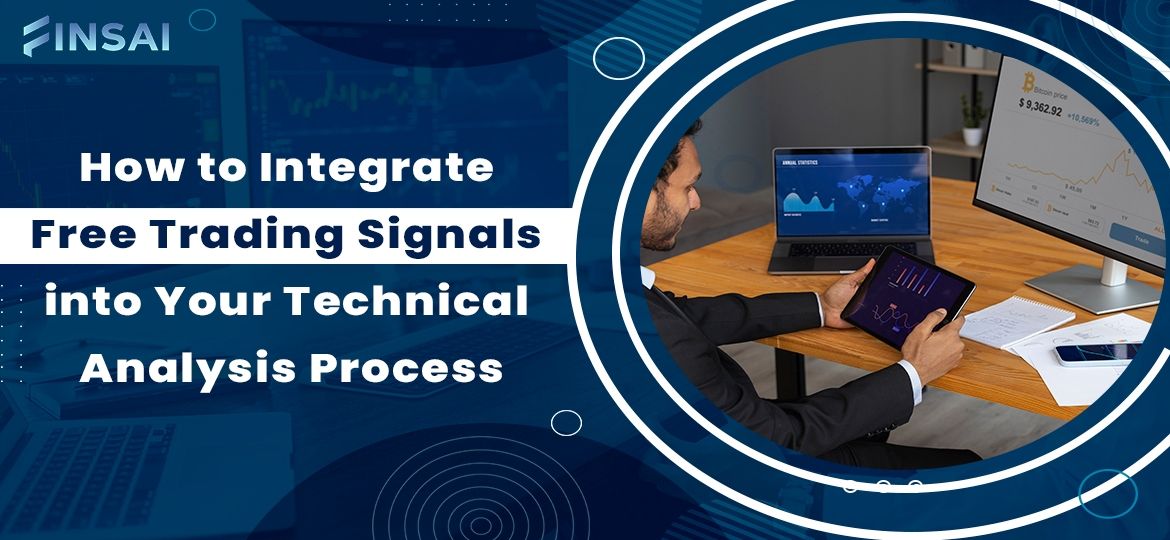
Including free trade signals in your technical analysis process will improve your online forex trading approach by offering insightful information and maybe raising your profitability. However, depending on signals without appropriate analysis can result in bad decisions. Free trade signals should be included in a strong technical analysis structure if one wants to optimize their advantages. This book will coach you through the procedures to properly include trade signals in your technical analysis approach.
Recognizing Free Trade Signals
Free trading signals are recommendations or notifications from many sources pointing up possible trading prospects in the currency market. Different criteria—technical indications, pricing patterns, market news—cause these signals to be produced. Usually, they provide details on the take-profit targets, stop-loss thresholds, and entrance prices.
Although free signals can be useful, it’s important to realize their quality and dependability varies. While some signals may come from automated trading systems or seasoned traders, others are produced by clever algorithms. Consequently, you should assess their correctness and applicability first before including them in your trading plan.
Step 1. Select Dependable Signal Providers.
Choosing trustworthy signal sources comes first when including free trade signals in your technical analysis routine. Here are some pointers to guide your selection of the finest sources:
- Reputation: Search for signal sources with a strong trading community reputation. To learn about the experiences of other traders, review forums, testimonials, and reviews.
- Transparency: Regarding their techniques and signal performance, a reliable signal source should be open. Steer clear of vendors who make illogical assertions or lack thorough knowledge of the generation of their signals.
- Consistency: Examining the signals’ stability across time will help you. Reliable suppliers should present signals that display consistent performance in several market environments.
- Compatibility: Check if the signals fit your trading approach and style. If you trade daily, for instance, search for providers with signals for quick transactions.
Step 2: Check The Signals Using Your Own Analysis.
You must confirm the authenticity of any trade signal by means of your own technical analysis before acting upon it. You should follow these guidelines:
- View the trend: To find the general market trend, use technical indicators, including trendlines, moving averages, or the Relative Strength Index (RSI). Make sure the trading signal lines up with the current trend. For instance, if the market is on an upswing, the signal advises purchasing a currency pair.
- Support and Resistance Levels: On your charts, note important levels of support and resistance. Verify whether a signal indicates trading close to a big support or resistance level has any great relevance. Trading close to these levels raises the chances of a good trade.
- Volume Analysis: Examining the trade volume will help one evaluate the signal’s strength. While low volume could suggest a lack of market conviction, high trading volume usually validates the veracity of a price movement.
- Candlestick Patterns: Look for candlestick trends supporting the trade indication. Additional proof of the veracity of the signal can come from patterns, including swallowing candles, hammers, or shooting stars.
Step 3: Fit Signals Into Your Trading Strategy.
Integrating a trade signal into your trading plan comes next once you have confirmed its dependability through technical analysis. This is matching the signal with your position sizing, entrance and exit policies, and risk management approach.
- Risk Management: Find out how much money you are ready to gamble on every deal. Find the suitable position size using the stop-loss level the signal offers. Make sure the risk on every deal stays under your chosen risk tolerance.
- Entry and Exit Rules: Define your entrance and exit rules depending on your analysis and the trading signal. For instance, before making a trade, make sure the price fits your technical indicators even if the signal advises purchasing at a particular level. Likewise, based on important resistance levels or technical indicators like Fibonacci retracements, determine your take-profit target.
- Trade Timing: Trade timing: Examine the signal’s timing. Not usually; the greatest strategy is starting a trade right away after getting a signal. Track the market and wait for more proof before starting the trade. This could call for waiting for a confirmation candle, a trend reversal, or a price breakout.
- Review and Adjust: After running the trade, track its development and change your take-profit and stop-loss levels as necessary. Consider trailing your stop-loss to lock in gains should the market turn to your advantage. On the other hand, should the trade reverse direction, be ready to follow your risk management guidelines and leave the deal.
Step 4: Mix Several Signals To Get Stronger Confirmation.
Combining several free trading signals can offer more robust proof of a trading prospect. A successful trade has more chances when several indications from different sources align. Here’s how you properly mix signals:
- Cross-verification: Should you get similar indications from other suppliers, it strengthens the trade setup’s legitimacy. By means of cross-verification, you can filter fewer trustworthy signals and concentrate on high-probability trades.
- Multiple Time Frames: Examining signals across several time frames is another way to get extra confirmation. For instance, check the 4-hour and 1-hour charts to see if you get a buy signal on a daily chart. Consistency throughout several time frames enhances the signal.
- Divergence Analysis: Analyze differences between signals and technical indicators. For instance, it could be advisable to review the trade or wait for more confirmation if a trading signal advises buying a currency pair, but your RSI indicator displays negative divergence.
Step 5: Check Integrated Signal Performance
Finally, one must assess the performance of integrated signals over time. Track your transactions in a trading journal, documenting your research, trade results, and signals you applied. Go over your notebook often to spot trends and areas of strength and weakness in your approach.
- Performance Metrics: Average profit per transaction, risk-to-reward ratio, and signal success rate should all be measured. This will enable you to ascertain whether adding free signals into your technical study is producing favorable effects.
- Continuous Improvement: Use your trade diary to always improve your plan. You should give some indications more weight in your research if you find that they regularly result in profitable trades. On the other hand, if some signals cause losses, hone your filtering technique or think about throwing those signals away.
- Adapt to Market Conditions: what is effective in one setting could not be in another. Change your integration process constantly to fit the state of the market; therefore, your approach stays successful.
In summary,
Though it requires careful thought and evaluation, including free trade signals in your technical analysis process will improve your online forex trading approach. You raise your chances of generating good trades by selecting trustworthy signal providers, confirming signals with your analysis, and including them in your trading strategy. Combining several signals and routinely assessing your performance can improve your strategy and enable you to negotiate the forex market with more assurance and success.

